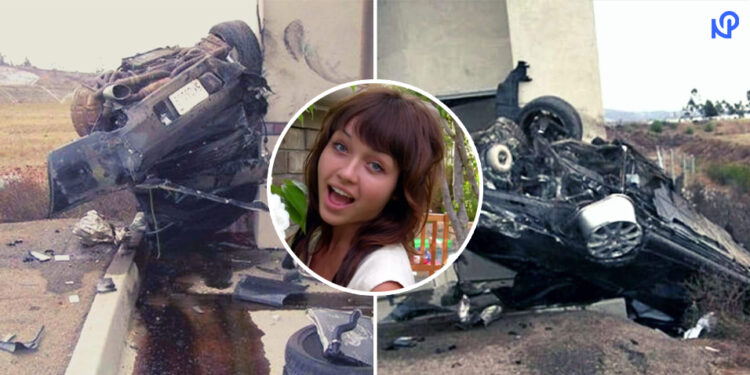The tragic and infamous case of Nikki Catsouras has reverberated through the media and the hearts of many who have come across it. Nikki Catsouras, a young woman with a promising future, met an untimely and gruesome end in a car accident that not only shocked her family but also sparked a debate about privacy and the ethical responsibilities of the media. This article delves into the details of the accident, its aftermath, and its broader implications on society.
Wiki BIo
| Quick Bio | |
|---|---|
| Full Name | Nicole “Nikki” Catsouras |
| Date of Birth | March 4, 1988 |
| Place of Birth | California, USA |
| Parents | Christos and Lesli Catsouras |
| Siblings | Two sisters |
| Residence | Ladera Ranch, California |
| Age at Time of Accident | 18 years old |
| Date of Accident | October 31, 2006 |
| Location of Accident | 241 Toll Road, Lake Forest, California |
| Vehicle Involved | Porsche 911 Carrera |
| Cause of Accident | Loss of control at high speed |
| Legal Outcome | $2.37 million settlement with CHP |
| Legacy | Advocacy for privacy rights and ethical conduct online |
Who Was Nikki Catsouras?
Nikki Catsouras was an 18-year-old girl from Ladera Ranch, California. Born on March 4, 1988, she was the daughter of Christos and Lesli Catsouras and had two sisters. Nikki was described as a vibrant, energetic young woman with a zest for life and a close-knit family who adored her. However, like many teenagers, she faced her share of struggles, including a recent about with substance abuse, which her family was trying to help her overcome.
The Day of the Accident
On October 31, 2006, Nikki’s life came to a tragic halt. The day started typically, but things took a tragic turn when Nikki, without permission, took her father’s Porsche 911 Carrera. It was a split-second decision fueled by a combination of teenage impulsiveness and a desire to experience the thrill of driving a powerful car. Her parents, unaware of her actions until it was too late, were left to grapple with the devastating consequences.
At approximately 1:38 PM, while driving at high speeds on the 241 Toll Road in Lake Forest, California, Nikki lost control of the Porsche. The car crossed the center median and collided with a concrete toll booth at an estimated speed of over 100 mph. The impact was catastrophic, and Nikki died instantly from the severe injuries she sustained.

The Aftermath and Media Sensation
The immediate aftermath of the crash was harrowing. Nikki’s body was severely mutilated, and the scene was one of absolute devastation. Usually, such incidents are handled with the utmost sensitivity, especially concerning disseminating graphic images. However, in this case, the response was anything but respectful.
Two California Highway Patrol (CHP) officers, Thomas O’Donnell and Aaron Reich, took photos of the accident scene as part of the standard investigation procedure. These images, intended for internal use, somehow made their way onto the internet. The photos’ graphic and disturbing nature quickly caught the online community’s attention, leading to widespread circulation. The Catsouras family was subjected to an unimaginable ordeal as they found these gruesome images spread across various websites and even received them in anonymous emails.
Legal Battles and Privacy Concerns
The unauthorized release of the accident photos led to a prolonged legal battle. The Catsouras family sued the California Highway Patrol for negligence, invasion of privacy, and infliction of emotional distress. The case highlighted significant gaps in privacy laws and raised questions about law enforcement agencies’ responsibilities and individuals’ ethical conduct in handling sensitive information.
In 2012, the California Court of Appeal ruled in favor of the Catsouras family, stating that the CHP officers breached their duty of care by leaking the photos. The court’s decision emphasized the importance of privacy and the need for stringent measures to prevent such breaches in the future. The CHP eventually settled the lawsuit for nearly $2.37 million, acknowledging the immense distress caused to the family.
The Role of Social Media and the Internet
The Nikki Catsouras incident is a stark reminder of the dark side of the internet and social media. The speed at which the images spread and the lack of control over their dissemination demonstrated the internet’s potential to cause harm. Despite efforts to remove the photos, they continued to resurface on various platforms, illustrating the permanence of online content once it is shared.
This case also prompted discussions about the ethical responsibilities of internet users. While freedom of speech and the right to share information are fundamental, they must be balanced against the potential for harm. The callous sharing of graphic images without considering the impact on the victims’ families showed a profound lack of empathy and respect.

The Psychological Impact on the Catsouras Family
The psychological toll on the Catsouras family was immense. Grieving the loss of a loved one is challenging under any circumstances, but the added trauma of having Nikki’s death publicly sensationalized made it even more unbearable. The family members, especially Nikki’s parents, suffered from severe emotional distress, compounded by the knowledge that their daughter’s last moments were being viewed and judged by strangers.
This emotional torment was exacerbated by the barrage of hateful messages and taunts they received online. Anonymous users sent cruel emails containing graphic images accompanied by insensitive remarks. The harassment forced the Catsouras family to retreat from public life, seeking solace and support from each other and close friends.
Changes in Policy and Legislation
The Nikki Catsouras case led to significant discussions about policy and legislative changes. It underscored the need for stricter controls on the distribution of sensitive information and more robust privacy protections. Law enforcement agencies were urged to adopt more straightforward guidelines and protocols to prevent similar incidents in the future.
In response to the public outcry and legal battles, California introduced new laws to prevent the unauthorized dissemination of graphic images. These laws imposed stricter penalties on individuals who violated privacy by distributing sensitive materials without consent. The case also prompted other states to review and strengthen their privacy laws to protect victims and their families better.
Reflections on a Tragic Lesson
The tragic death of Nikki Catsouras poignantly reminds us of the fragility of life and the unforeseen consequences of seemingly impulsive decisions. While Nikki’s family continues to grieve her loss, they have also become advocates for privacy rights and ethical conduct online. Their courage in fighting for justice has honored Nikki’s memory and paved the way for more robust privacy protections for others.
Conclusion
The Nikki Catsouras accident is a heartbreaking example of how the insensitive actions of others can compound tragedy. It highlights the need for greater awareness and empathy in our digital age, where the line between public and private life is increasingly blurred. Although marred by sadness, Nikki’s story has sparked meaningful conversations about privacy, responsibility, and the ethical use of technology. As we move forward, it is crucial to remember the lessons learned from this incident and strive to create a more compassionate and respectful online community.













